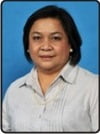Perceptions of Mentors and Mentees on the Importance of Engaging in Reflective Practices in the Mentoring Process During the Teaching Practicum
Abstract
ABSTRACT: The purpose of this study is to investigate the factors that influenced the reflective practices by mentors and mentees in the mentoring process during the teaching practicum. The study was carried out in two secondary schools in Sabah, Malaysia. Nine mentees and twelve teacher mentors participated in the study. A qualitative case study was employed to explore the experience of mentors and mentees who engaged in the reflective practices. The study showed that the overall impact of engaging in reflective practices obviously was varied, but generally positive for both mentees and mentors. By utilizing the positive outcomes of this study, it indicates that it is important for mentors and mentees to engage in reflective practices and reflective journal-writing. These two components should be a major component to be included of the teacher training program and emphasized throughout the teacher practicum.
KEY WORD: Mentoring process, reflective practices, mentors, mentees, interpersonal skills, and reflective journals.
IKHTISAR: Tujuan kajian ini adalah untuk mengkaji faktor-faktor yang mempengaruhi amalan reflektif oleh mentor dan mentee dalam proses pementoran semasa praktikum pengajaran. Kajian ini telah dijalankan di dua buah sekolah menengah di Sabah, Malaysia. Sembilan orang mentee dan dua belas orang mentor guru terlibat dalam kajian ini. Satu kajian kes kualitatif telah digunakan untuk meneroka pengalaman mentor dan mentee yang terlibat dalam amalan reflektif. Kajian menunjukkan bahawa kesan keseluruhan terlibat dalam amalan reflektif adalah pelbagai, tetapi pada umumnya adalah positif bagi kedua-dua mentee dan mentor. Dengan menggunakan hasil positif daripada kajian ini, ia menunjukkan bahawa adalah penting untuk mentor dan mentee melibatkan diri dalam amalan reflektif dan penulisan jurnal reflektif. Kedua-dua komponen ini harus dimasukkan ke program latihan perguruan dan ditekankan sepanjang praktikum guru.
KATA KUNCI: Proses pementoran, amalan reflektif, mentor, mentee, kemahiran interpersonal, dan jurnal reflektif.

About the Author: Dr. Christina Peter Ligadu is a Senior Lecturer and International Coordinator at the School of Education and Social Development UMS (Malaysia University of Sabah), Kota Kinabalu, Sabah, Malaysia. E-mail: ligadu@ums.edu.my
How to cite this article? Ligadu, Christina Peter. (2012). “Perceptions of Mentors and Mentees on the Importance of Engaging in Reflective Practices in the Mentoring Process During the Teaching Practicum” in ATIKAN: Jurnal Kajian Pendidikan, Vol.2(1) Juni, pp.1-20. Bandung, Indonesia: Minda Masagi Press owned by ASPENSI in Bandung and FKIP UNSUR in Cianjur, West Java, ISSN 2088-1290.
Chronicle of the article: Accepted (April 1, 2012); Revised (May 2, 2012); and Published (June 15, 2012).
Full Text:
PDFReferences
Arnold, E. (2006). “Assessing the Quality of Mentoring: Sinking or Learning to Swim” in ELT Journal, 60 [April], pp.117-124.
Balassa, K., C. Bodoczky & D. Saunders. (2003). “An Impact Study of the National Hungarian Mentoring Project in English Language Training” in Mentoring and Tutoring, 11(3), pp.307-320.
Barnett, B.G. (1995). “Developing Reflection and Expertise: Can Mentor Make the Difference” in Journal of Educational Administration, 33(5), pp.45-59.
Britton, E.D. (2006). “Mentoring in the Induction System of Five Countries: A Sum Greater than its Parts” in C. Cullingford [ed]. Mentoring in Education: An International Perspective. England: Ashgate, pp.107-120.
Brockbank, A. & I. McGill. (2006). Facilitating Reflective Learning through Mentoring and Coaching. London: Kogan Page.
Brooks, V. & P. Sikes. (1997). The Good Mentor Guide: Initial Teacher Education in Secondary School. Buckingham: Open University Press.
Comiskey, B. & M. Cotson. (1997). “Striking a Balance: Teacher, Tutor, and Student Views of ITE Partnership and Quality” in Mentoring and Tutoring, 4(3), pp.52-59.
Danielson, L. (2002). “Developing and Retaining Quality Classroom Teachers through Mentoring” in The Clearing House: Washington, 75(4), pp.183-185.
Degago, A.T. (2007). “Using Reflective Journals to Enhance Impoverished Practicum Placements: A Case in Teacher Education in Ethiopia” in Teacher Education, 18(4), pp.343-356.
Ehrich, L.C., B. Hansford & L. Tennent. (2004). “Formal Mentoring Programs in Education and Other Professions: A Review of the Literature” in Educational Administration Quarterly, 40(4), pp.518-540.
Elliot, B. (1991). Action Research for Educational Change. Philadelphia: Open University Press.
Furlong, J. & T. Maynard. (1995). Mentoring Student Teachers: The Growth of Professional Knowledge. London: Routledge.
Furlong, J. (2000). “School Mentors and University Tutors: Lessons from the English Experiment” in Theory into Practice, 39(1), pp.12-19.
Ghaye, A. & K. Ghaye. (1998). Teaching and Learning through Critical Reflective Practice. London: David Fulton.
Hargreaves, A. & M. Fullan. (2000). “Mentoring in the New Millennium” in Theory and Practice, 39(1), pp.50-56.
Head, K. & P. Taylor. (1997). Readings in Teacher Development. Oxford: Heinemann.
Huling, L. & V. Resta. (2001). “Teacher Mentoring as Professional Development” in ERIC Digest. Washington, DC: ERIC Clearinghouse on Teaching and Teacher Education. ED460125. Available also at http://www.ericdigests.org/2002-3/mentoring.htm [accessed in Kota Kinabalu, Malaysia: January 10, 2012].
Kolb, D.A. (1984). Experiential Learning: Experience as a Source of Learning and Development. Englewood Cliffs, NJ: Prentice Hall.
Schön, D. (1987). Educating the Reflective Practitioner. San Francisco: Jossey-Bass.
Sendut, H., J. Madsen & G. Thong. (1989). Managing in a Plural Society. Singapore: Longman.
Tomlinson, P. (1995). Understanding Mentoring: Reflective Strategies for School-Based Teacher Preparation. Buckingham: Open University Press.
Yost, R. (2002). “I Think I can: Mentoring as a Means of Enhancing Teaching Efficacy” in The Clearing House, 75(4), pp.195-197.
